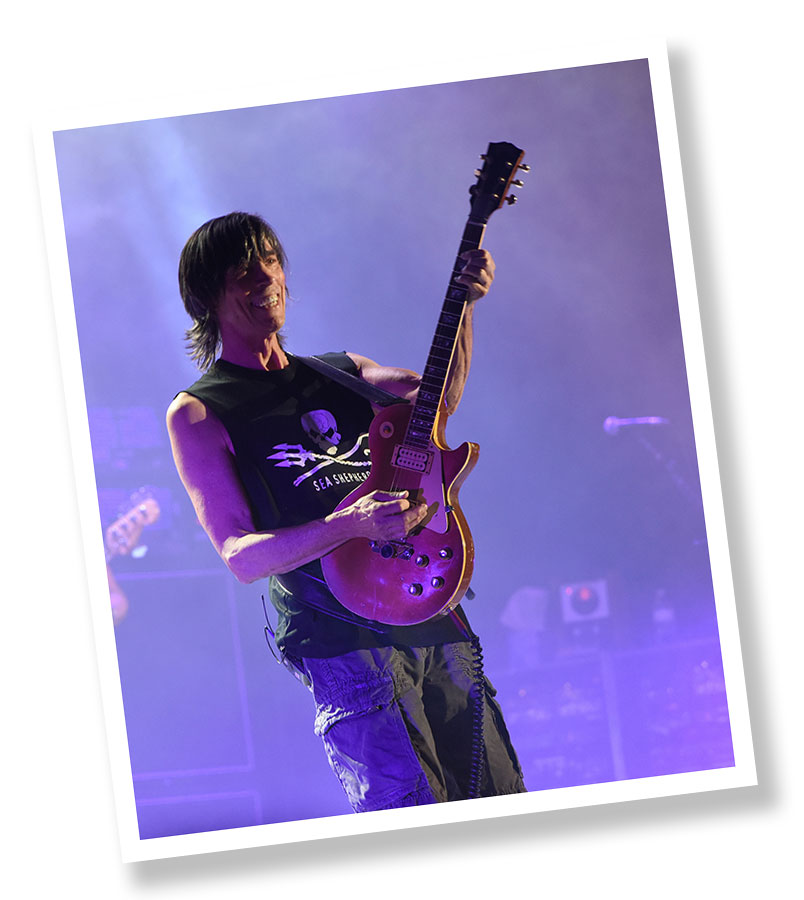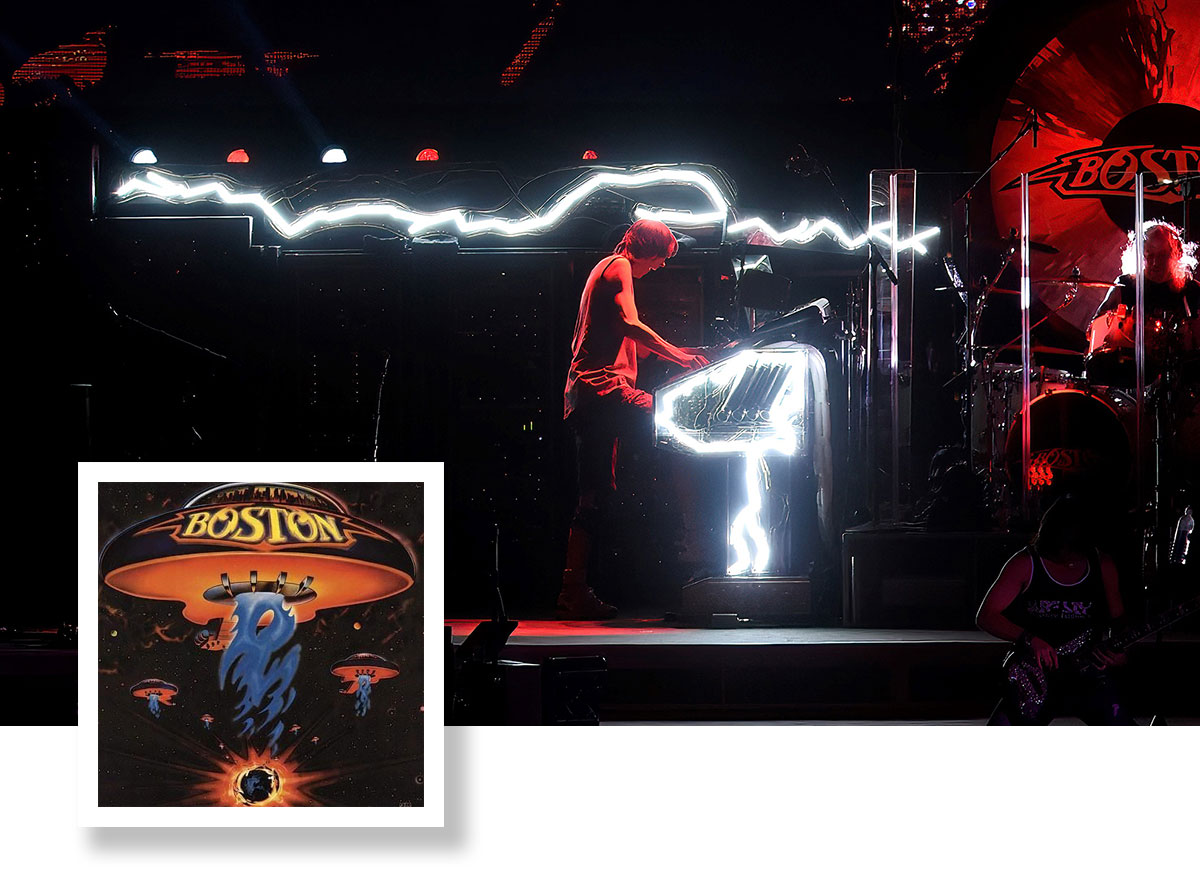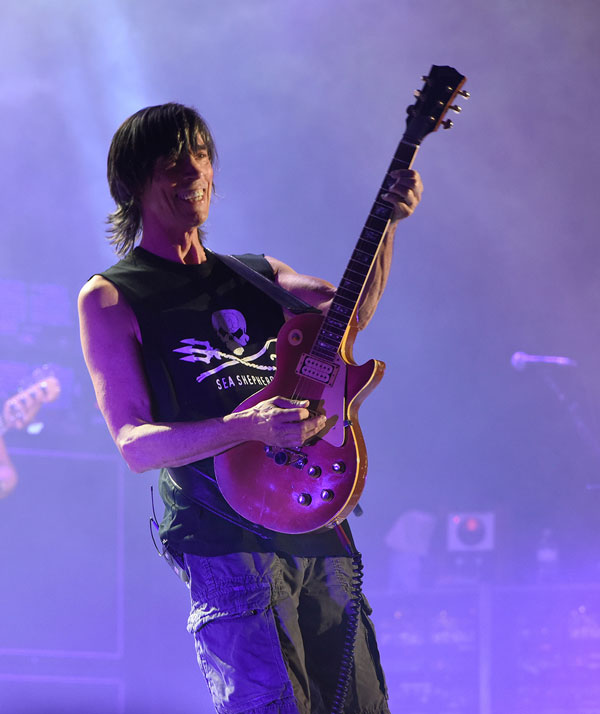The Boston founder and front man makes his lighting debut with an invention that safely simulates a lightning bolt on stage
How does an internationally known rock icon end up lighting?
No one had built or designed a safe means to replicate a lightning bolt or electrical discharge on stage. I wanted a shocking visual for Boston’s 2016 summer tour that wouldn’t result in casualties, so I needed to use my imagination, engineering experience and construction skills to come up with a solution. Since this hadn’t been done before, I knew I would have to build it myself—in the garage. Also, I should add that I’ve always really enjoyed building weird tech stuff, and what could be weirder than lightning in your garage?
Can you explain how your simulator invention works?
Kind of. Lightning, or giant electrical discharge arcs, appear to begin at a point or points, and extend rapidly, making a connection to the opposite electrical pole. Other characteristics include blindingly bright light, very fast erratic flickering, and unpredictable sudden changes in the discharge path. Oh yeah, and deadly high voltage. So, to get the aforementioned characteristics without the deadly part, I took advantage of the relatively new COB LED strip technology and built a string of short segments of various lengths arranged in a pattern modeled after recent images of actual lightning strikes, including junctions where the lit portions could “jump” to another pathway. Because these would only be lit for a second or so, I drove the LED strips way beyond their design voltage which resulted in incredibly bright flashes. The power had to be controllable to every small segment of the display independently which meant an enormous amount of wiring, all terminating at a device that would sequence the segments in a realistic manner. For the 2016 tour that device would end up being two of my empty coffee cans each with a bank of beryllium-copper brushes riding on the cans as they rotate. By simply masking off a pattern on the cans, each segment of the “lightning bolt” was connected to ground to power up the LEDs as desired. The cans were mounted on spindles with a crank on top.

How did the lightning bolt come alive on stage?
For the entire 60-plus show tour, they were slowly rotated on cue by one of our trustworthy stage techs—by hand. Later my good friend Bob Cedro (one of the Rockman design engineers) designed and built a more appropriately high-tech programmable sequencer to run the system in 2017…but I still like the coffee cans the best.
Who is your target market for this product and how do you plan on bringing it to market?
Not all inventions need to be marketed. Although it is now protected by a patent, I would not be opposed to allowing its use for other stage presentations. So far there have been no calls, so like my 50-year-old guitar echo pedal that makes the wild sounds possible on Boston songs, this may end up being exclusively a Boston thing!
Do you have any other lighting inventions up your sleeve?
I’m not telling.
Any chance we’ll catch this one on stage during a future Boston tour?
Any future Boston show will definitely travel with lightning—I really wanted to include a giant short circuit to the lighting truss! Maybe next time…

